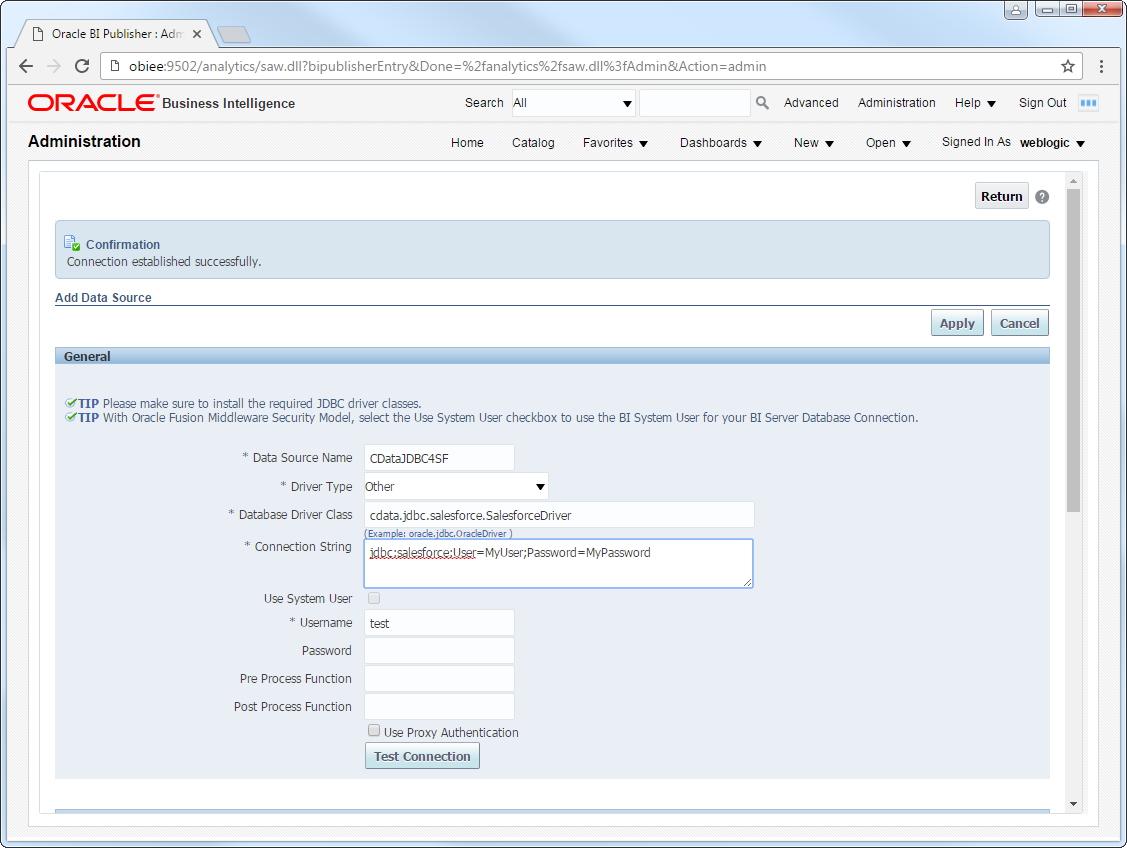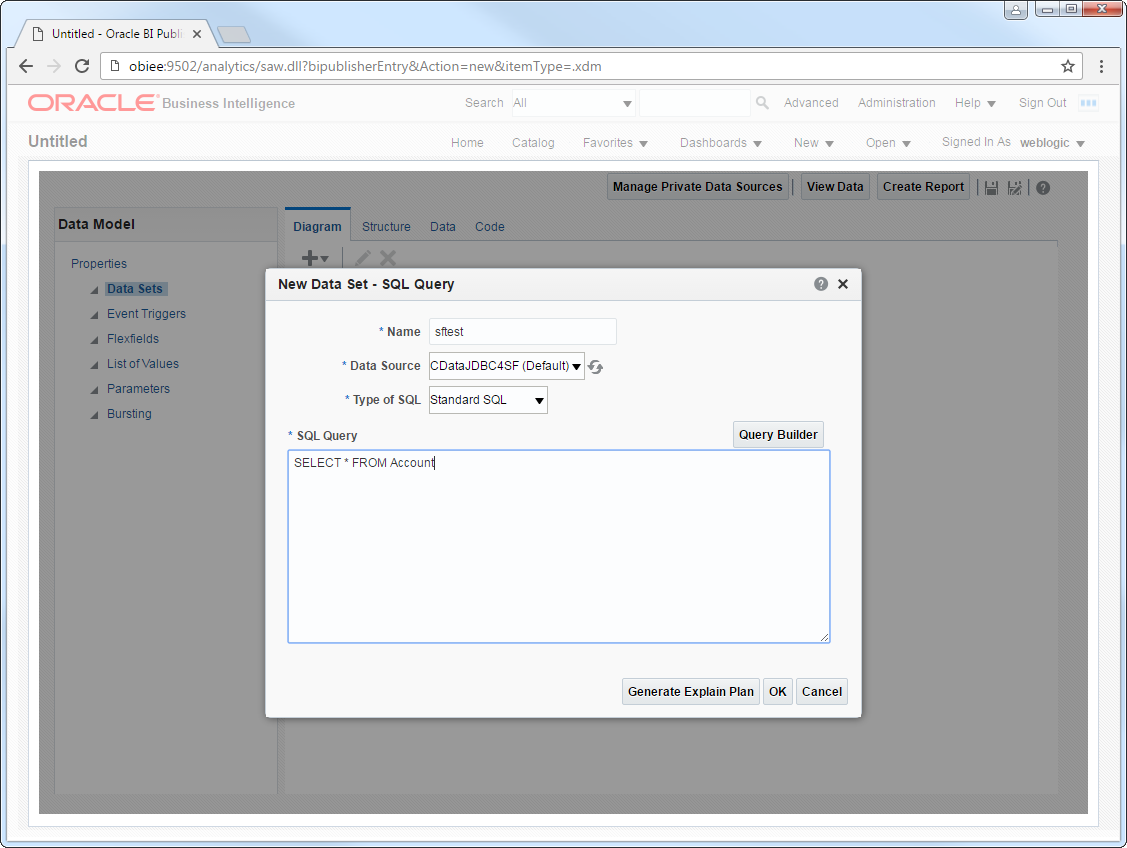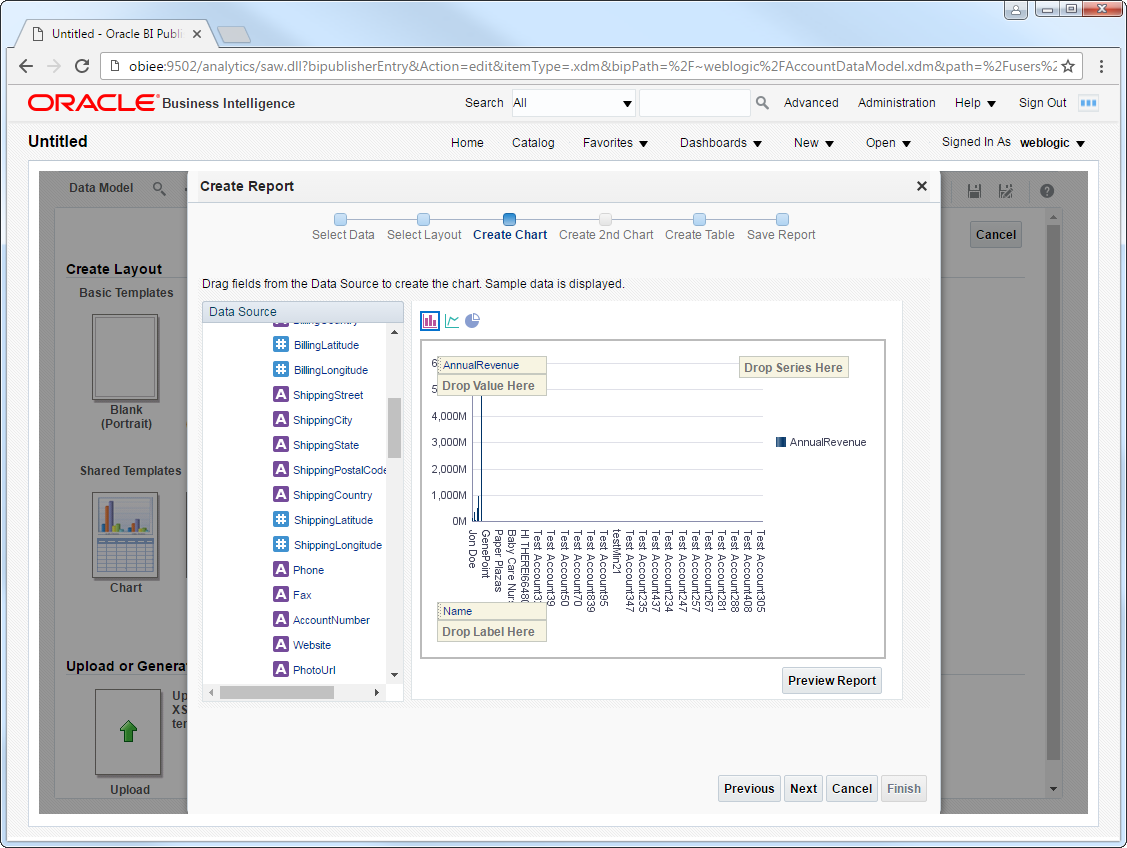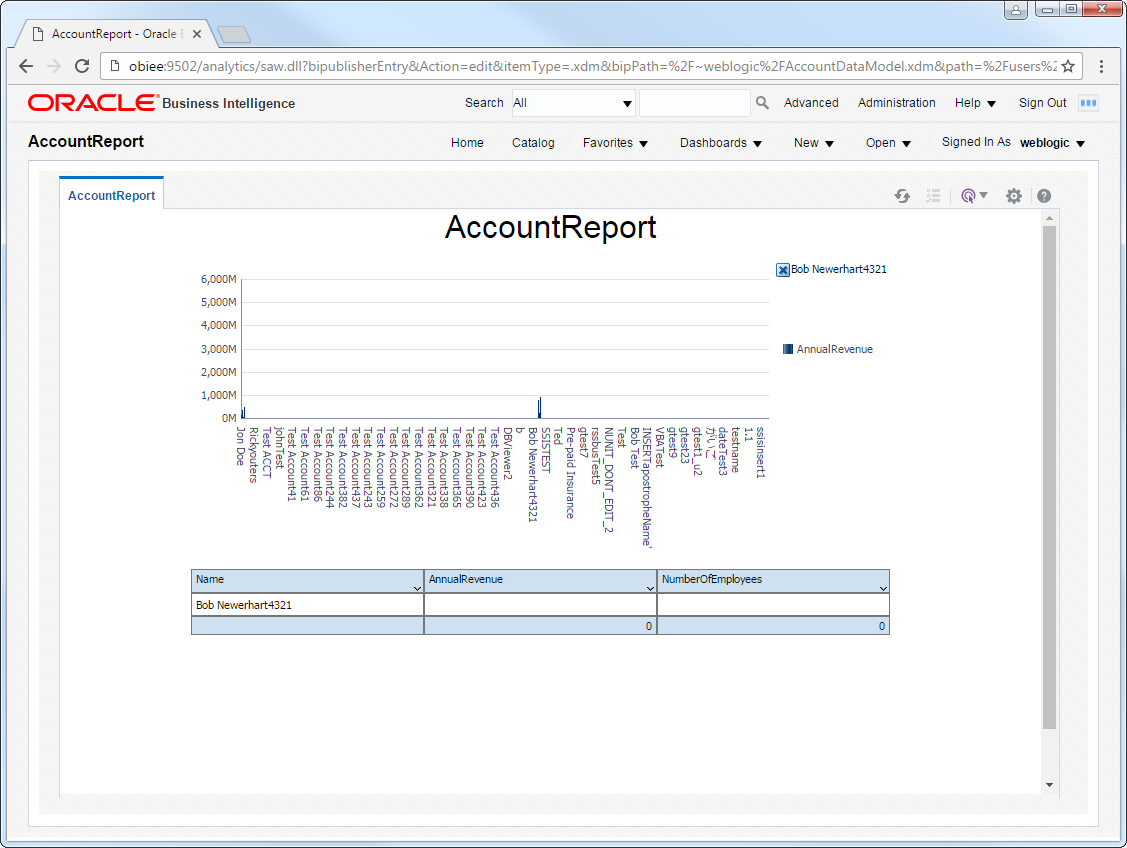Discover how a bimodal integration strategy can address the major data management challenges facing your organization today.
Get the Report →PayPal Reporting in OBIEE with the PayPal JDBC Driver
Deploy the PayPal JDBC driver on OBIEE to provide real-time reporting across the enterprise.
The CData JDBC Driver for PayPal is a standard database driver that can integrate real-time access to PayPal data into your Java-based reporting server. This article shows how to deploy the driver to Oracle Business Intelligence Enterprise Edition (OBIEE) and create reports on PayPal data that reflect any changes.
Deploy the JDBC Driver
Follow the steps below to add the JDBC driver to WebLogic's classpath.
For WebLogic 12.2.1, simply place the driver JAR and .lic file into DOMAIN_HOME\lib; for example, ORACLE_HOME\user_projects\domains\MY_DOMAIN\lib. These files will be added to the server classpath at startup.
You can also manually add the driver to the classpath: This is required for earlier versions. Prepend the following to PRE_CLASSPATH in setDomainEnv.cmd (Windows) or setDomainEnv.sh (Unix). This script is located in the bin subfolder of the folder for that domain. For example: ORACLE_HOME\user_projects\domains\MY_DOMAIN\bin.
set PRE_CLASSPATH=your-installation-directory\lib\cdata.jdbc.paypal.jar;%PRE_CLASSPATH%
Restart all servers; for example, run the stop and start commands in DOMAIN_HOME\bitools\bin.
Create a JDBC Data Source for PayPal
After deploying the JDBC driver, you can create a JDBC data source from BI Publisher.
- Log into BI Publisher, at the URL http://localhost:9502/analytics, for example, and click Administration -> Manage BI Publisher.
- Click JDBC Connection -> Add Data Source.
- Enter the following information:
- Data Source Name: Enter the name that users will create connections to in their reports.
- Driver Type: Select Other.
- Database DriverClass: Enter the driver class, cdata.jdbc.paypal.PayPalDriver.
- Connection String: Enter the JDBC URL.
The provider surfaces tables from two PayPal APIs. The APIs use different authentication methods.
- The REST API uses the OAuth standard. To authenticate to the REST API, you will need to set the OAuthClientId, OAuthClientSecret, and CallbackURL properties.
- The Classic API requires Signature API credentials. To authenticate to the Classic API, you will need to obtain an API username, password, and signature.
See the "Getting Started" chapter of the help documentation for a guide to obtaining the necessary API credentials.
To select the API you want to work with, you can set the Schema property to REST or SOAP. By default the SOAP schema will be used.
For testing purposes you can set UseSandbox to true and use sandbox credentials.
Built-in Connection String Designer
For assistance in constructing the JDBC URL, use the connection string designer built into the PayPal JDBC Driver. Either double-click the JAR file or execute the jar file from the command-line.
java -jar cdata.jdbc.paypal.jarFill in the connection properties and copy the connection string to the clipboard.
![Using the built-in connection string designer to generate a JDBC URL (Salesforce is shown.)]()
When you configure the JDBC URL, you may also want to set the Max Rows connection property. This will limit the number of rows returned, which is especially helpful for improving performance when designing reports and visualizations.
A typical JDBC URL is below:
jdbc:paypal:Schema=SOAP;Username=sandbox-facilitator_api1.test.com;Password=xyz123;Signature=zx2127;InitiateOAuth=GETANDREFRESH - Username: Enter the username.
- Password: Enter the password.
- In the Security section, select the allowed user roles.
![The required settings for a JDBC data source. (Salesforce is shown.)]()
Create Real-Time PayPal Reports
You can now create reports and analyses based on real-time PayPal data. Follow the steps below to use the standard report wizard to create an interactive report that reflects any changes to PayPal data.
- On the global header, click New -> Data Model.
- On the Diagram tab, select SQL query in the menu.
- Enter a name for the query and in the Data Source menu select the PayPal JDBC data source you created.
- Select standard SQL and enter a query like the following:
SELECT Date, GrossAmount FROM Transactions![The SQL query to be used to create the data set for the report's data model. (Salesforce is shown.)]()
- Click View Data to generate the sample data to be used as you build your report.
- Select the number of rows to include in the sample data, click View, and then click Save As Sample Data.
- Click Create Report -> Use Data Model.
- Select Guide Me and on the Select Layout page select the report objects you want to include. In this example we select Chart and Table.
- Drop a numeric column like GrossAmount onto the Drop Value Here box on the y-axis. Drop a dimension column like Date onto the Drop Label Here box on the x-axis.
![The dimensions and measures for a chart. (Salesforce is shown.)]()
- Click Refresh to pick up any changes to the PayPal data.
![An interactive, refresh-on-demand report. (Salesforce is shown.)]()











